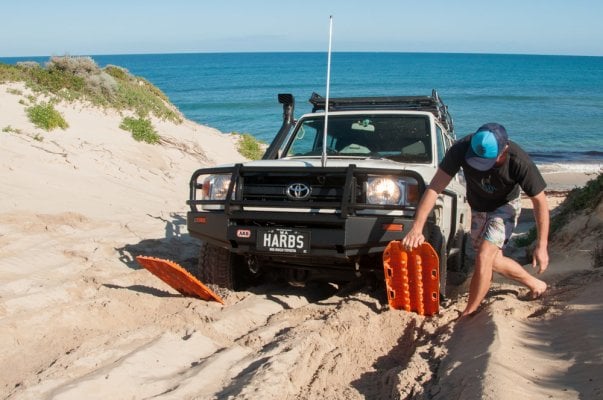I’ve been to the southern tip (Cabo San Lucas) of Baja Sur for 3 weeks each of the last two years.
Things to bring:
1.Mike & Terri Church book “Camping Mexico’s Baja” - lots of tips and campground ratings. Campgrounds are necessary during the trip if you are trying to cover long distances and just need to sleep.
2. Water jugs and a means to pump water into your water tank. Most towns have an agua purificado station and a hose to fill your tank and your extra jugs. They are mainly safe to use. But, you need to use your judgement. Look at the cleanliness, how they store the fill hoses etc. be prepared to look elsewhere if you are not comfortable with what you see.
3. First aid kit and tools for minor repairs-there are long stretches of road where you are on your own.
4. Emergency communication device-think Garmin/Delorme inReach. Long stretches of desolate roads with no cell service.
5. National Geographic Maps of Baja Norte and Baja Sur. These maps are very detailed and accurate.
6. Mexico insurance is a must.
7. If you have a lien on your vehicle you will need an “authorization letter” from the lender. Never been asked to show it but it is reason to confiscate your vehicle if you are asked to show it such as if you have an accident.
8. Common Sense. Plan to obey traffic laws. Know that stop signs are merely a suggestion for the locals but a huge revenue generator from the touristas who ignore them and try to drive like a local.
Tips and ideas:
1. Last March, the road from Catavina to Guerra Negro was a wreck. Huge potholes everywhere. Road construction can show up anywhere and there can be delays. Try not to push your distances too much and be sure to have a back up camping location if you do encounter delays.
2. Do not drive at night. The roads are narrow and the semis like to drive at night, very fast. The shoulders are narrow to non-existent and the cause of a great many vehicle roll overs-you will see the memorials everywhere. The cattle are all free range and they will lay down on the warm pavement at night. It is dark in the desert and you don’t see them until too late.
3. Watch your fuel. The Church’s detail the so-called gas gaps.
4. Watch the pumps when you buy fuel. The days of blatant rip offs have receded but tricksters are out there. Watch the entire fueling process like a hawk. The workers understand and love a small tip. They will usually wash your windows!
5. Try to speak a little Spanish. It goes a long way.
6. The larger towns have big grocery stores and I find them fun to shop in. It is a bit overwhelming at first but still enjoyable if you go with the journey.
A few spots to consider:
1. Bahia Los Angeles is a nice spot to get your first isolated camping after a long drive south. Playa La Gringa is free to camp on the water but no facilities
2. Catavina is a long drive from San Diego but reachable at dark if you leave San Diego at first light and do not dilly dally along the way. The campground is simple but cheap and has pit toilets.
3. The beaches outside San Ignacio are nice and the whale watching is awesome from there. Ecoturismo Kuyima is the group we toured with. They have an office on the town square at San Ignacio and a nice campground with clean showers. They are funded by Scripps Oceanography.
4. The beaches from Mulege to Bahia Concepcion are crowded but beautiful. We like to stay on a free local beach south of Loreto. Juncalito is the name.
5. Puerto Escondido has a newish marina that is not in most books. You can stay in the parking lot if you get there and pay before 5 when the office closes. The facility has nice showers, laundry and a top shelf restaurant for a reasonable price. It’s a good stop off point and fairly close to Loreto which is a lovely town ignored by many tourists.
6. La Paz is a favorite tourist spot for many main land Mexican tourists. They can easily take the ferry from Puerto Vallarta. It is also the spot where you would ship your rig if you wanted to return North via ferry to the mainland. I want to do that one year. The beach on the outskirts of town has beautiful sand dunes and lots of free camping. The beach has a lot of Canadiens that spend the winter there. There are lots of restaurants right on the water and the prices are very good.
7. Our final destination is always the beaches south of Los Barriles. We will sometimes stay at a campground in that town called East Cape Casas & RV Resort. It is a great stop off point before the remote beach camping or just before beginning the long drive home. Yes, there are lots of people and big rigs but the showers are the cleanest in the Baja, there is a pool, washing machines, wi-fi and a short walk to great restaurants.
8. Just south of La Ribera begins a 40 mile stretch of dirt road, beautiful isolated beaches, great fishing, and gorgeous sunrises. Drive down the road, look for an arroyo and pull in. My idea of great Baja Camping!
Awesome! Thanks so much for sharing all of this!

